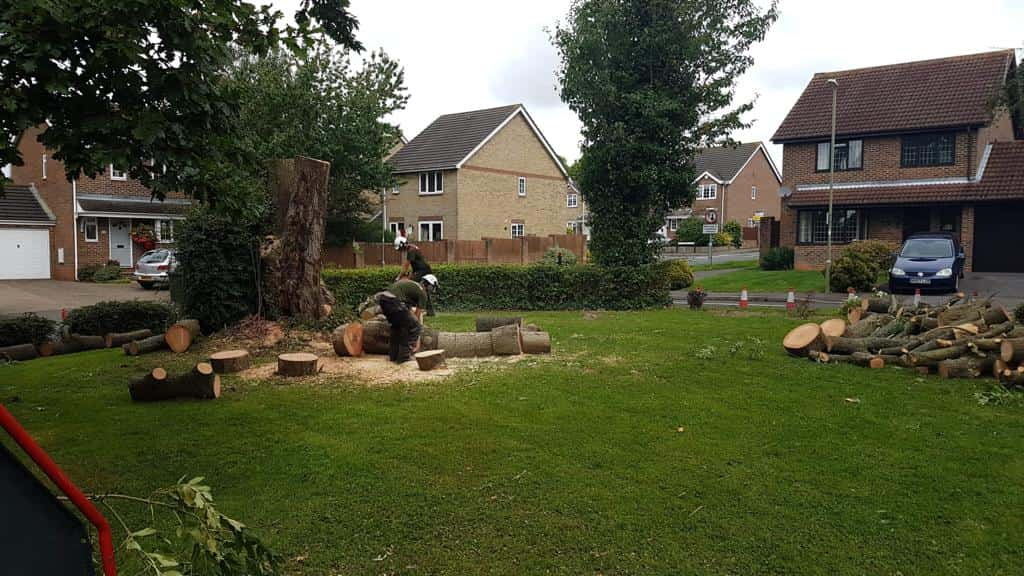Introduction
Mature trees are an asset to any landscape. They provide shade, shelter, visual appeal, and environmental benefits. However, when a tree grows too large for its space—blocking sunlight, interfering with property lines, or creating safety concerns—homeowners may feel torn between preserving the tree and removing it altogether.
The good news is that there are professional ways to reduce a tree’s impact without cutting it down. At LM Tree Surgery Southsea, we specialise in a range of tree management techniques that help residents across Southsea and Hampshire retain their valuable trees while keeping them in proportion to their surroundings. In this article, we explore the safest and most effective ways to make a large tree feel smaller, all while preserving its health and beauty.
Why Not Just Remove the Tree?
Tree removal should always be a last resort. A mature tree takes decades to grow and offers ecological and aesthetic value that can’t easily be replaced.
Keeping a tree in place offers:
- Shade and cooling benefits for the home and garden
- A natural habitat for birds and wildlife
- Improved air quality and carbon absorption
- Increased property kerb appeal
Instead of removing the tree entirely, the focus should be on skilled reduction techniques that manage size and shape while protecting the tree’s integrity.
Techniques to Make a Tree Appear Smaller
1. Crown Reduction
Crown reduction is a common and effective method to reduce the overall height and spread of a tree. It involves selectively pruning back the outer branches, making the tree more compact and balanced without damaging the main structure.
Benefits of crown reduction:
- Reduces the overall footprint of the canopy
- Preserves the natural shape and health of the tree
- Prevents branches encroaching on buildings, roads, or power lines
- Helps reduce wind resistance and potential storm damage
At LM Tree Surgery Southsea, we carry out precise crown reduction using professional techniques that avoid over-pruning or leaving unsightly stubs.
2. Crown Thinning
If a tree feels overwhelming due to its density rather than its size, crown thinning may be the answer. This involves the careful removal of select internal branches to allow more light and airflow through the canopy.
Why choose crown thinning?
- Improves light penetration into shaded areas of your garden
- Reduces the risk of wind damage by decreasing sail effect
- Maintains the height and outline of the tree
- Enhances the tree’s structure without altering its silhouette
This is especially useful for species with thick foliage that overshadow lawns, patios, or nearby windows.
3. Crown Lifting
Crown lifting involves removing the lower branches of a tree to raise the canopy’s height from the ground. It’s ideal for trees that obstruct walkways, driveways, or views.
Key advantages:
- Clears space for pedestrians, vehicles, or garden use
- Improves sightlines and allows more natural light underneath
- Creates a neater, more refined tree profile
- Reduces the feeling of being “boxed in” by large trees
This method can be very effective for residents in urban areas like Southsea, where outdoor space is limited and visibility is important.
4. Formative Pruning
For younger trees that are already showing signs of future overgrowth, formative pruning can help guide the tree’s development. Shaping the tree during its early years leads to a stronger, more manageable structure later on.
Benefits of early intervention:
- Encourages balanced growth and branch spacing
- Prevents structural weaknesses from developing
- Minimises the need for heavy pruning later
- Reduces long-term maintenance requirements
Formative pruning is often overlooked but can save time and cost in future tree care.
Signs Your Tree May Need Resizing
Knowing when it’s time to reduce a tree’s size can prevent future problems. Here are some common signs:
- Tree branches are growing too close to the house, windows, or gutters
- Large branches overhang neighbours’ properties or public footpaths
- The tree blocks too much natural light
- The structure looks unbalanced or top-heavy
- You’re concerned about safety in high winds
If any of these apply, it’s worth having your tree assessed by a qualified professional.
Always Use a Professional
Attempting to reduce a tree’s size without the proper knowledge and equipment can lead to serious damage, not just to the tree, but to people and property. Poor pruning can create long-term health issues, unstable regrowth, or an unsightly appearance.
At LM Tree Surgery Southsea, our experienced arborists use industry-approved methods to ensure:
- Safe and clean pruning cuts
- The health and structural integrity of the tree are preserved
- All work complies with local tree protection regulations
- Minimal disruption to your garden or outdoor space
We also offer expert advice on which trees respond best to reduction and how often pruning should be carried out.
Conclusion
You don’t need to remove a large tree to manage its size. With the right tree surgery techniques—such as
crown reduction, thinning, or lifting—you can enjoy the benefits of mature trees without the drawbacks of overgrowth. These professional solutions allow you to shape and scale your trees to fit your garden’s needs while maintaining their health and appearance.
LM Tree Surgery Southsea is here to help residents throughout Hampshire keep their trees safe, attractive, and well-proportioned. If you have a large tree that’s starting to feel too dominant, get in touch with our expert team to arrange a consultation. We’ll assess your tree and recommend the best course of action to suit both your property and the tree itself.
Call us on: 023 8235 3277
Click here to find out more about LM Tree Surgery Southsea
Click here to complete our contact form and see how we can help with your tree needs.

